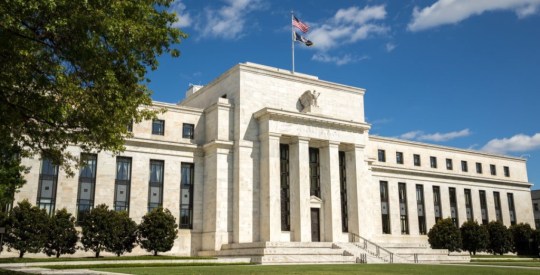The Federal Reserve unexpectedly cut its benchmark rate by half a percentage point in an effort to bolster the economy and calm coronavirus fears.
“The coronavirus poses evolving risks to economic activity,” the Fed said in a statement issued at 10 a.m. Tuesday.
The Fed’s rate-setting Federal Open Market Committee made the rare inter-meeting cut “in light of these risks and in support of achieving its maximum employment and price stability goals,” it said.
Fed Chairman Jerome Powell held a press conference in Washington D.C. an hour after announcing the cut.
“We saw a risk for the outlook to the economy and chose to act,” he told reporters. “The U.S. economy is strong and we will get to the other side of this.”
The emergency rate cut will make business borrowing cheaper and likely result in lower borrowing costs for homeowners with variable-rate home equity loans that are indexed to the U.S. prime rate, which moves in tandem with the Fed rate.
Borrowing costs for fixed-rate mortgages are set by bond investors, and if the Fed decision results in money managers going back into the stock markets, it may stem a slide in fixed interest rates seen last week as competition for bonds heated up.
The rare inter-meeting cut came as stock markets struggled to regain ground after last week’s sell-off that was the worst retreat since 2008. Powell issued a statement on Friday afternoon, while the markets were still open, pledging: “We will use our tools and act as appropriate to support the economy.”
On Monday, Wells Fargo reversed its Federal Reserve forecast to say it now predicted the Fed would cut its rate by 1% by the end of June, likely in two 50-basis-point cuts. Before the coronavirus outbreak spread beyond China, Wells Fargo had been forecasting the Fed would hold the rate in its current 1.5% to 1.75% range through 2020.
When SARS chilled the global economy during the 2002 to 2003 outbreak, China represented 4% of the world’s GDP. Today, the most populous nation accounts for about 17% of global economic activity.
Coronavirus cases in the U.S. have surpassed 100, and at least six people have died, according to government data. About half of those cases are Americans who were repatriated after getting the disease known as COVID-19 while traveling overseas.
Surgeon General Jerome Adams urged Americans to remain cautious and calm amid charges the government had bungled the manufacturing and distribution of test kits needed to adequately measure the extent of the COVID-19 outbreak in the U.S.
“We should be cautious and take appropriate measures to prepare and protect ourselves, but we should not be afraid,” he said. “We’ve been through this before, and no place in the world is better prepared to handle this challenge.”
President Donald Trump, who has been name-calling Fed policymakers for over a year to try to motivate them to slash rates – dubbing them “boneheads” and “clueless” – tweeted his tepid approval, while simultaneously calling for additional cuts.
“It is finally time for the Federal Reserve to LEAD,” he wrote. “More easing and cutting!”
However, if the Fed had acquiesced to those presidential demands last year – which evolved from steep reductions to a below-zero rate – it would not have this tool to deploy in the face of the coronavirus emergency.
In econo-speak, the Fed was “keeping its gunpowder dry.”



